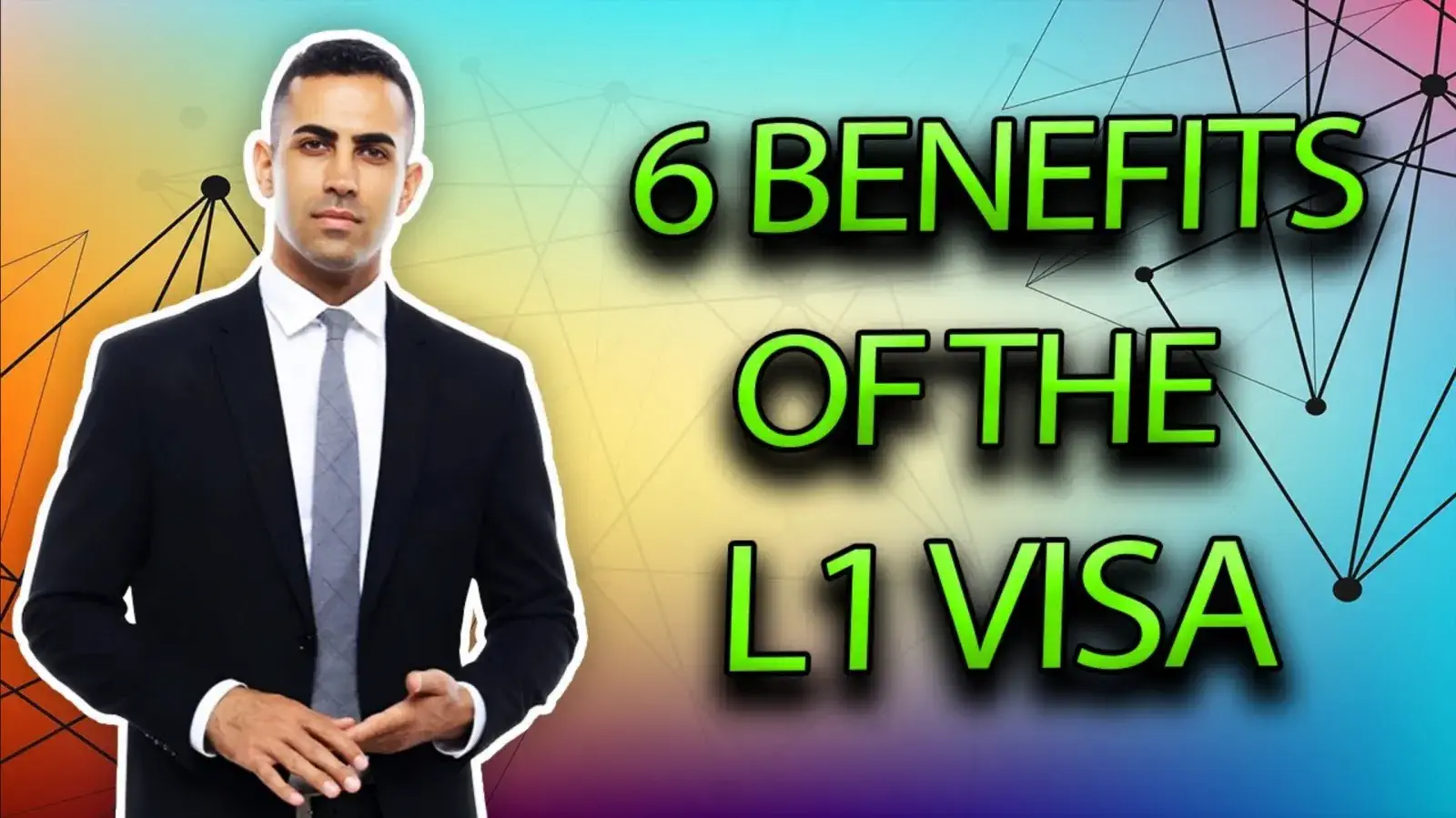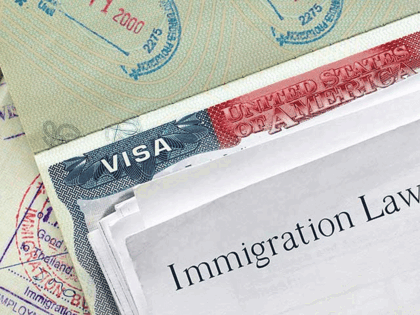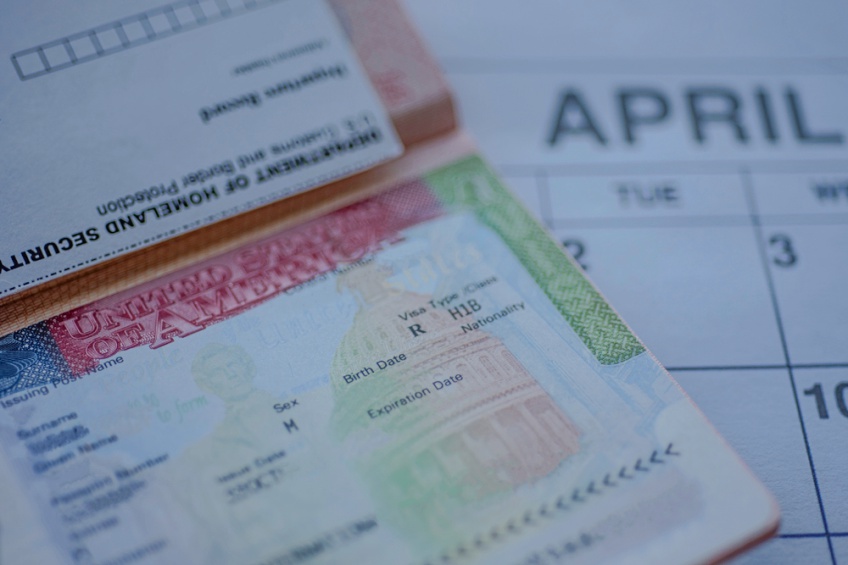Unlocking Opportunities: A Comprehensive Guide to the L1 Visa Process
The L1 visa process presents a crucial pathway for international firms seeking to transfer crucial staff members throughout borders. Comprehending the subtleties of qualification standards, the distinctions between L-1A and L-1B visas, and the details of the application procedure can significantly impact a candidate's success. Maneuvering this facility landscape is not without its challenges, and cautious interest to paperwork and employer sponsorship is vital. As we check out the essential components of this process, the approaches for conquering possible challenges will become apparent, revealing just how informed prep work can open up a world of chances.
Understanding the L1 Visa
Recognizing the L1 visa entails recognizing its significance as a crucial device for international firms looking for to transfer skilled workers in between international offices. This non-immigrant visa classification assists in the movement of execs, managers, and specialized understanding employees to the United States, consequently making it possible for organizations to preserve functional connection and harness global talent effectively. The L1 visa is split into two primary categories: L-1A for managers and executives, and L-1B for employees having specialized knowledge.The L1 visa offers a critical function in boosting a company's affordable edge in the international marketplace - L1 Visa Requirements. By permitting firms to move their vital employees, services can ensure that important projects are handled by certified individuals that are already accustomed to the business's society and operational processes. This inner transfer mechanism not just promotes expertise sharing yet likewise promotes technology and collaboration across borders.Moreover, the L1 visa is usually favored for its relatively uncomplicated application process contrasted to other visa classifications, as it allows for double intent, allowing owners to pursue long-term residency while on a short-term job visa. This attribute makes the L1 visa particularly appealing for both companies and staff members, as it improves the path for knowledgeable specialists to establish long-lasting residency in the USA
Qualification Standards
Qualification for the L1 visa depends upon a number of vital standards that assure both the worker and the employer fulfill details qualifications. This non-immigrant visa is made for multinational firms to transfer workers from consular services to U.S. counterparts.Firstly, the employer must be a qualifying organization, which includes a moms and dad business, branch, affiliate, or subsidiary of a united state service. The firm needs to have been doing business for at least one year both in the U.S. and abroad. This assures that the firm has sufficient operational stability and a genuine presence.Secondly, the worker has to hold a supervisory, executive, or specialized expertise position. For L1A visas, the applicant must demonstrate managerial or executive certifications, while L1B visas concentrate on specialized understanding associated to the company's products, services, or procedures. In addition, the employee must have helped the international entity for a minimum of one continual year within the last three years prior to their application.Lastly, the worker's function in the united state need to straighten with their previous setting, ensuring that their abilities and proficiency are leveraged for the company's advantage.
Kinds Of L1 Visas
The L1 visa group comprises 2 main types designed to help with the transfer of staff members within international business: the L1A visa for managers and executives, and the L1B visa for staff members with specialized understanding. Each type offers distinctive functions and has details eligibility criteria.The L1A visa is customized for individuals who hold managerial or executive settings within a firm. This visa allows high-level workers to move to an U.S. branch, subsidiary, or affiliate of the very same organization. Applicants for the L1A visa have to demonstrate that they have been utilized in a supervisory or executive capacity for a minimum of one continuous year within the previous 3 years before their application. Furthermore, this visa offers a much longer duration of remain, originally given for three years, with the opportunity of expansions for up to seven years.In comparison, the L1B visa is meant for specialists with specialized expertise pertaining to the company's products, solutions, or procedures. To qualify, candidates have to verify that their know-how is vital to the company which they have actually benefited at the very least one constant year within the last 3 years in a role that needed this specialized understanding. The L1B visa is originally provided for 3 years, with expansions offered for as much as five years.Both visa kinds are essential for firms seeking to enhance their global operations by leveraging experienced employees, therefore promoting technology and performance within the united state market.
Application Process
Guiding via the L1 copyright procedure involves numerous vital steps that must be meticulously complied with to assure a successful end result. The process starts with the united state company, who should initially develop eligibility by demonstrating a qualifying partnership with the foreign entity and confirming that the worker fulfills the specific needs for the L1 visa group being sought.Once qualification is verified, the employer starts the process by filing Kind I-129, the Application for a Nonimmigrant Employee, with the U.S. Citizenship and Immigration Services (USCIS) This kind should be accompanied by a detailed description of the work responsibilities to be executed, the business framework of both the U.S. and international entities, and the staff member's qualifications. It's essential to confirm that all details is precise and complete, as noninclusions or errors can lead to hold-ups or denials.Upon approval of the I-129 application, the next step includes the employee obtaining the L1 visa at a united state embassy or consulate in their home country. This stage calls for the conclusion of Form DS-160, the Online Nonimmigrant copyright, and scheduling a meeting. Throughout the interview, the candidate must provide evidence supporting their certifications and the employer's petition.After the visa is granted, the employee can enter the USA to function in the designated function. Overall, cautious prep work and adherence per action of the application process are necessary for an effective L1 visa result.
Required Documentation

Crucial Kinds Needed
Steering the L1 Visa procedure requires careful attention to the crucial types and paperwork required for a successful application. The key kind needed is the Type I-129, Petition for a Nonimmigrant Worker, which have to be completed and sent by the united state employer. This form outlines the details of the work offer and the certifications of the worker seeking the L1 Visa.Alongside Form I-129, the applicant will require to full Type I-539 if going along with relative are likewise using for visas. Additionally, the company needs to provide proof of the qualifying connection between the united state entity and the foreign entity, often requiring the entry of company papers such as write-ups of incorporation or financial statements.Moreover, it is important to include the L Classification Supplement to Kind I-129, which specifies the type of L Visa being asked for-- either L-1A for supervisors and execs or L-1B for workers with specialized understanding. Applicants must assure that all forms are signed and dated appropriately, as incomplete entries can lead to delays or denials. Appropriately setting up these vital types lays the foundation for a smoother L1 copyright procedure.

Supporting Proof Requirements
Sustaining paperwork is important for an effective L1 copyright, as it confirms the claims made in the petition. Applicants must offer a variety of documents to show qualification for the visa, which is categorized right into two primary types: proof of the certifying relationship between the U.S. and international entities and proof of the candidate's qualifications.To develop the relationship, candidates must submit documents such as company business charts, economic declarations, and proof of ownership. These papers verify that the international company has a qualifying partnership with the U.S. company, whether as a moms and dad business, subsidiary, branch, or affiliate.For the applicant's qualifications, necessary files consist of a thorough employment letter from the foreign company, detailing the candidate's job title, obligations, and duration of work. Additionally, educational credentials, such as degrees and diplomas, need to be provided to show the applicant's knowledge in the pertinent field.
Employer Sponsorship Records

Common Obstacles
Steering the L1 visa procedure presents a number of common difficulties that applicants need to know. Trick problems commonly include strict documentation requirements, prospective delays in handling times, and the necessity for stringent lawful compliance. Understanding these obstacles can assist candidates better prepare and mitigate risks throughout their copyright journey.
Paperwork Requirements
The L1 L1 Visa law firm copyright process commonly provides significant obstacles connected to documentation demands. Candidates should give substantial documents to develop qualification, which can lead to confusion and possible delays. Secret documents include proof of a qualifying partnership between the U.S. and foreign employer, proof of the applicant's work background, and comprehensive information concerning the work duty in the U.S.One usual obstacle is gathering enough proof to show the nature of the certifying connection. Companies typically battle to existing clear business graphes or economic statements that show the link in between the entities. In addition, making sure that letters of assistance from companies properly mirror the applicant's work tasks and qualifications is essential, as obscure summaries can lead to denials.Another concern arises from the requirement for comprehensive task descriptions that straighten with the L1 visa classifications. Candidates should articulate not just their present duty yet additionally their managerial or specialized expertise responsibilities plainly. This requires an extensive understanding of both the applicant's position and the regulatory language used in L1 applications.
Handling Dead Time
Experiencing hold-ups in processing times is an usual difficulty dealt with by L1 visa applicants, typically causing irritation and uncertainty. Numerous aspects contribute to these hold-ups, including high application quantities, enhanced analysis of applications, and administrative stockpiles within the U.S. Citizenship and Migration Services (USCIS) Candidates might find that processing times can differ substantially relying on the solution center managing their application, as each center has its very own work and performance levels. In addition, the complexity of the applicant's instance, such as the requirement for extensive documentation or explanation, can even more prolong wait times.In some instances, concerns related to the candidate's existing immigration condition or previous visa history might likewise result in extra hold-ups, as USCIS may need further evaluation or information. It is crucial for candidates to continue to be positive throughout this duration, keeping open communication with their companies and legal representatives to address any potential problems promptly.Understanding these processing time difficulties can help L1 visa candidates plan for feasible hold-ups and minimize the effect on their change and job plans. Patience and diligence are important virtues in navigating this complex procedure.
Lawful Conformity Issues
Numerous L1 visa applicants run into legal compliance issues that can complicate their trip toward acquiring the visa. Understanding and adhering to the certain regulations set by the U.S. Citizenship and Immigration Provider (USCIS) is essential. Common obstacles consist of showing the certifying partnership in between the foreign and U.S. companies, along with proving that the applicant possesses the requisite specific understanding or supervisory capacity.Additionally, applicants should supply comprehensive documentation outlining their work obligations, company structure, and financial feasibility of the U.S. entity. Inadequate or inaccurate documentation can lead to delays and even denials. Employers should also guarantee that they adhere to labor legislations, including wage and functioning condition criteria, which can impact visa eligibility.Another common concern includes preserving compliance with the regards to the visa when given. Changes in work condition, task obligations, or company framework can demand amendments to the visa, which if not dealt with promptly can bring about lawful problems. Consequently, remaining informed concerning conformity requirements and seeking legal counsel when essential is necessary to navigate the intricacies of the L1 visa process successfully.
Tips for Success
Success in the L1 copyright procedure usually pivots on meticulous preparation and focus to detail. To enhance your possibilities of authorization, begin by extensively recognizing the eligibility demands for both the L1A and L1B visa groups. Assess whether your setting at the business certifies as managerial, exec, or specialized expertise, as this categorization notably affects your application.Next, collect comprehensive documents that substantiates your insurance claims. This includes organizational graphes, comprehensive job summaries, and proof of the company's operational structure. Clear and succinct evidence of the qualifying relationship between the U.S. entity and the foreign entity is crucial. Validate that all documents are organized practically and offered in an expert fashion, as this reflects your commitment and seriousness about the application.Engage the solutions of a skilled migration lawyer that concentrates on L1 visas. Their expertise can show very useful, leading you via facility guidelines and assuring that all documentation adheres to existing legislations. Additionally, prepare for the meeting by practicing answers to typical concerns and preparing to review your role and payments to the business comprehensive.
Frequently Asked Questions
Can Household Members Go Along With the L1 Visa Holder?
Yes, relative of L1 visa owners, including spouses and single youngsters under 21, can accompany the primary visa holder. They may also request L2 visas, which permit them to live in the United States.
Just How Long Can I Remain on an L1 Visa?
The L1 visa enables initial keeps of approximately three years, with the possibility of expansion. L1A visa holders might remain for a maximum of 7 years, while L1B visa owners can remain for five years.
Can L1 Visa Owners Request a copyright?
Yes, L1 visa owners can make an application for a permit. L1 Visa. They might go after long-term residency through employment-based groups, commonly requiring sponsorship from their company, given they fulfill the needed certifications and documentation needs
What Happens if My L1 copyright Is Denied?
If your L1 copyright is refuted, you might get a notice outlining the factors for denial. You can seek to appeal the decision, reapply, or check out alternative visa choices based upon your conditions.
Are There Any Kind Of Travel Limitations With an L1 Visa?
An L1 visa usually permits worldwide travel; nonetheless, re-entry to the united state rests upon keeping valid status. Tourists should ensure conformity with visa problems to avoid complications upon return
Conclusion
